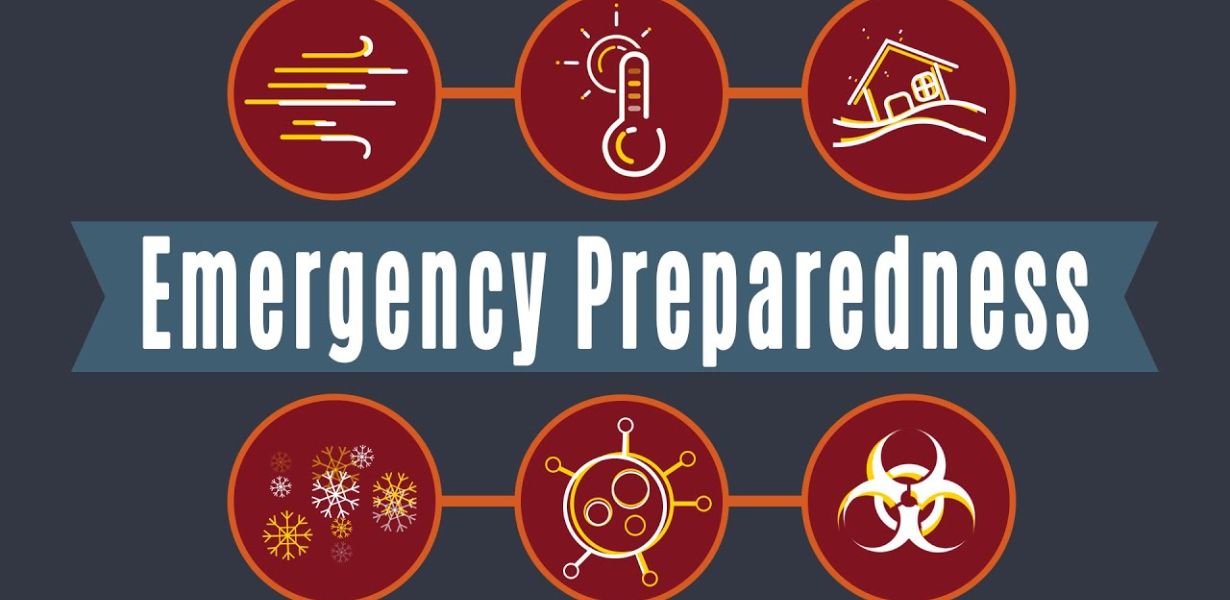
Emergencies can strike without warning, leaving us vulnerable and unprepared. In today’s world, having a robust emergency preparedness plan isn’t just an option – it’s a necessity. From natural disasters to unforeseen events, having a well-thought-out strategy can be the difference between chaos and control. In this comprehensive guide, we delve into the depths of emergency preparedness, empowering you with the knowledge and tools needed to face the unexpected with confidence.
Understanding the Essence of Emergency Preparedness
In a world prone to uncertainties, having a solid emergency preparedness plan is akin to having a safety net for yourself and your loved ones. Whether it’s a natural disaster, a medical emergency, or a sudden power outage, being prepared can significantly minimize the impact of such events. To successfully navigate through emergencies, a comprehensive approach is essential.
The Key Components of an Effective Emergency Preparedness Plan
Risk Assessment and Vulnerability Analysis
Begin by assessing the potential risks specific to your location. Research past incidents and analyze the vulnerability of your surroundings. This will help you tailor your plan to address the most probable threats.
Communication Strategies
Establish clear communication channels with your family, neighbors, and local authorities. Utilize multiple methods such as cell phones, walkie-talkies, and designated meeting points to stay connected during emergencies.
Emergency Supplies and Resources
Build a well-stocked emergency kit that includes essentials like food, water, first aid supplies, medications, flashlights, batteries, and basic tools. Rotate perishables regularly and ensure everyone knows where the kit is located.
Evacuation Plan and Routes
Outline evacuation routes from your home, workplace, and other frequently visited places. Familiarize yourself with alternative routes and have a designated meeting place for your family in case you’re separated.
Sheltering Strategies
Identify safe areas within your home where you can take cover during different types of emergencies. Reinforce structures if necessary and stock these areas with emergency supplies.
Medical and Health Considerations
Factor in the unique needs of family members with medical conditions or special requirements. Keep medical records, prescriptions, and important contacts readily accessible.
Training and Skill Development
Equip yourself and your family with basic first aid skills, CPR knowledge, and any other relevant training. These skills can be invaluable in providing immediate assistance before professional help arrives.
Staying Informed: The Role of Training and Education
Gaining knowledge is a powerful way to enhance your emergency preparedness. Enroll in local workshops, online courses, or community training programs. Stay up-to-date with the latest safety protocols, and engage in drills that simulate real-life scenarios. Continuously expanding your understanding will bolster your ability to respond effectively during crises.
Emergency Preparedness Month: A Dedicated Opportunity
Each year, Emergency Preparedness Month serves as a reminder of the importance of being ready for any situation. This designated time provides a great opportunity to review and update your emergency plan, refresh your supplies, and ensure everyone in your household is on the same page.
Final Words
In a world of unpredictability, proactive measures pave the way for a safer tomorrow. Crafting an effective emergency preparedness plan, tailored to your circumstances, is an investment in your well-being. By assessing risks, establishing communication, and acquiring essential skills, you’re not only shielding yourself from the unknown but also empowering yourself to face whatever challenges may come your way.
Commonly Asked Questions
Q1. What should my emergency kit include?
Your emergency kit should encompass non-perishable food, water, first aid supplies, medications, flashlights, batteries, a multi-tool, and important documents.
Q2. How often should I review and update my emergency plan?
Regularly review your plan at least twice a year, and make updates whenever your family dynamic or living situation changes.
Q3. Can I rely solely on my mobile phone for communication during emergencies?
While mobile phones are crucial, they may not always work in every scenario. Utilize multiple communication methods like landlines, two-way radios, and social media to ensure connectivity.
Q4. What steps can I take to ensure the safety of my pets during emergencies?
Include your pets in your emergency plan. Prepare pet food, medications, carriers, and identification tags. Research pet-friendly shelters or accommodations in advance.
Q5. How can I encourage my community to prioritize emergency preparedness?
Organize community workshops, seminars, or neighborhood meetings to educate others about the importance of preparedness. Collaborate with local authorities to amplify your efforts.




